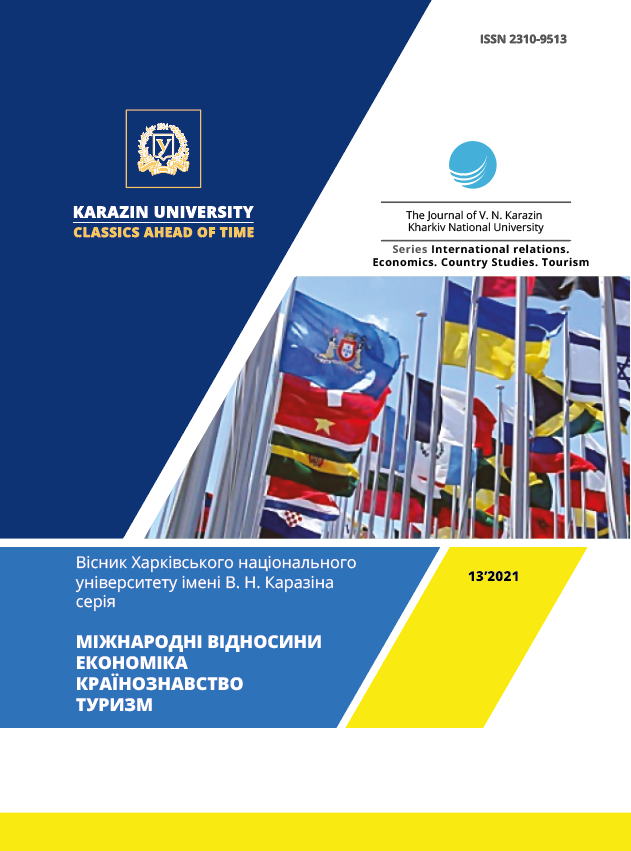Current problems of international information security
Abstract
The problems and areas of ensuring effective international information security are considered, which are based on the analysis of the current state of global cybercrime, the existing main directions of global cyberattacks and the development of possible methods and means of countering them, with the use of current research and reporting materials of specialized international companies specializing in the problems of international information security security and the development of appropriate comprehensive tools for its provision. The subject of research in the article is the issue of ensuring international information security, cyber protection and combating cybercrime. The goal is to analyze the current state and current problems of international information security to ensure its effective management at the state and corporate levels in various countries and regions of the world. Tasks: processing and analysis of the latest reports and conclusions concerning the current state of international information security in various countries and regions of the world; research of the main information threats, their types, current directions and sources; analysis of existing and promising directions and means of countering information threats to ensure effective international information security. The general scientific method of system analysis is used - to identify existing information and cyber threats and analyze their features, as well as to research existing and promising ways of combating them. The following results were obtained: based on the results of processing reports and the conclusions of the Microsoft Digital Defense Report concerning the current state of international information security in various countries and regions of the world, the main information threats, their types, current directions, goals and sources were investigated. Current issues of international cybercrime based on the use of ransomware, as well as the main target areas of relevant cyberattacks, have been determined. Existing and promising directions and means of countering information threats to ensure effective international information security are analyzed. The main trends in increasing the level of cyber protection and information security in the world have been determined. Conclusions: It is shown that as the number, sophistication and impact of online threats increase, to counter them, international organizations, companies and individuals must take measures to strengthen the so-called first line of defense, in particular, use strong multi-factor authentication. It was determined that at the moment there are three main trends in increasing the level of cyber protection and information security in the world: the implementation of unprecedented steps by the leading countries of the world to solve the problem of cyber security using already existing laws and powers; the adoption and introduction by governments around the world of new laws that require organizations to report on the detection of cyber attacks; voluntary notification by governments and international companies to the public when they become victims of attacks. The trend is also a further increase in the number and scope of cyber-attacks for any political purpose, be it espionage, subversion or destruction. At the same time, it is expected that more countries will join the list of those participating in offensive cyber operations, and that these operations will become more daring, persistent and disruptive, with more serious consequences. At the same time, in order to counter this, governments and international companies are making more and more efforts to counter these informational dangers.
Downloads
References
/References
Лубенець С.В., Харченко І.М., Новікова Л.В. Проблеми побудови консолідованих стратегій управління корпоративною інформаційною безпекою в регіоні ЕМЕА. Вісник Харківського національного університету імені В.Н. Каразіна. Сер. «Міжнародні відносини. Економіка. Країнознавство. Туризм». Вип. 14. С. 24 34. https://doi.org/10.26565/2310-9513-2021-14-03
Cindy Zhiling Tu, Yufei Yuan, Norm Archer, Catherine E. Connelly. Strategic value alignment for information security management: a critical success factor analysis. Information and Computer Security. 2018. Vol. 26, № 2. P. 150-170.
Dan Perez, Sarah Jones, Greg Wood, Stephen Eckels. Check Your Pulse: Suspected APT Actors Leverage Authentication Bypass Techniques and Pulse Secure Zero-Day : web site. URL: https://www.mandiant.com/resources/suspected-apt-actors-leverage-bypass-techniques-pulse-secure-zero-day (date of the application: 13.02.2023).
Joseph R., Biden Jr. Executive Order on Improving the Nation’s Cybersecurity : web site. URL: https://www.whitehouse.gov/briefing-room/presidential-actions/2021/05/12/executive-order-on-improving-the-nations-cybersecurity/ (date of the application: 13.02.2023).
Microsoft Digital Defense Report 2022 : web site. URL: https://www.microsoft.com/en-us/security/business/microsoft-digital-defense-report?rtc=1 (date of the application: 13.02.2023).
Tom Burt. New nation-state cyberattacks : web site. URL: https://blogs.microsoft.com/on-the-issues/2021/03/02/new-nation-state-cyberattacks/ (date of the application: 13.02.2023).
Lubenets S., Harchenko I., Novikova L. (2021) Problemy pobudovy konsolidovanyh strategij upravlinnja korporatyvnoju informacijnoju bezpekoju v regioni EMEA [Problems of Building Consolidated Corporation Strategies for Corporate Information Security Management in the EMEA Region]. The Journal of V. N. Karazin Kharkiv National University. Series: International Relations. Economics. Country Studies. Tourism, vol. 14, pp. 24 34. (in Ukrainian). https://doi.org/10.26565/2310-9513-2021-14-03
Cindy Zhiling Tu, Yufei Yuan, Norm Archer, Catherine E. Connelly (2018) Strategic value alignment for information security management: a critical success factor analysis. Information and Computer Security, vol. 26, no. 2. pp. 150-170.
Dan Perez, Sarah Jones, Greg Wood, Stephen Eckels. Check Your Pulse: Suspected APT Actors Leverage Authentication Bypass Techniques and Pulse Secure Zero-Day. Available at: https://www.mandiant.com/resources/suspected-apt-actors-leverage-bypass-techniques-pulse-secure-zero-day (accessed 13.02.2023).
Joseph R., Biden Jr. Executive Order on Improving the Nation’s Cybersecurity. Available at: https://www.whitehouse.gov/briefing-room/presidential-actions/2021/05/12/executive-order-on-improving-the-nations-cybersecurity/ (accessed 13.02.2023).
Microsoft Digital Defense Report 2022. Available at: https://www.microsoft.com/en-us/security/business/microsoft-digital-defense-report?rtc=1 (accessed 13.02.2023).
Tom Burt. New nation-state cyberattacks. Available at: https://blogs.microsoft.com/on-the-issues/2021/03/02/new-nation-state-cyberattacks/ (accessed 13.02.2023).
Authors who publish with this journal agree to the following terms:
- Authors retain copyright and grant the journal right of first publication of this work under the terms of a license Creative Commons Attribution License 4.0 International (CC BY 4.0).
- Authors are able to enter into separate, additional contractual arrangements for the non-exclusive distribution of the journal's published version of the work (e.g., post it to an institutional repository or publish it in a book), with an acknowledgement of its initial publication in this journal.
- Authors are permitted and encouraged to post their work online (e.g., in institutional repositories or on their website) prior to and during the submission process, as it can lead to productive exchanges, as well as earlier and greater citation of published work.




